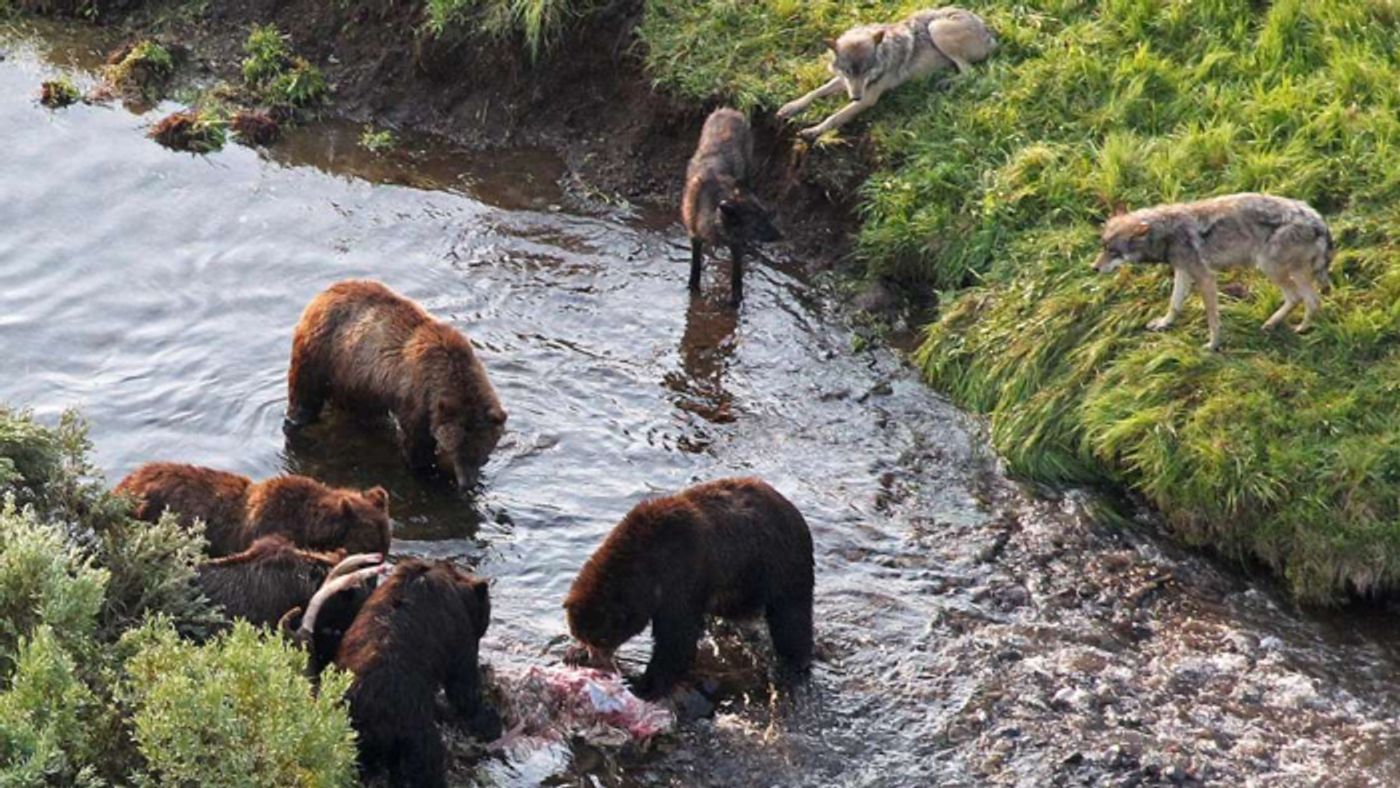Wolves Who Compete With Brown Bears for Food Eat Less
The diverse set of animals in the wild often have to compete for their right to snag a bite to eat, and things are no different for hungry wolf populations that have to cohabitate with hungry brown bear populations.
Image Credit: Daniel Stahler, National Park Service
According to a study published in the Proceedings of the Royal Society B, there might be a pretty important link between malnourished wild wolves and wild brown bear populations.
Because brown bears are significantly larger than wolves, they tend to have a dominance factor too. When it comes to hunting, the act is first come, first served, and the brown bears are able to snag the upper hand by scaring away the smaller wolves and claiming the kill for themselves.
"Wolves and brown bears coexist across most of their range," says study lead author Aimee Tallian. "Although competition between predators such as these is widespread in nature, we know little about how brown bears affect wolf predation."
To learn more, the study involved identifying and observing populations around the world, including Yellowstone National Park, right here in the United States, as well as in parts of Northern Europe. The team was seeking to learn more about wolf predation patterns in regions where brown bear populations are more prevalent.
The findings revealed that wolves were acting as the predator far less often when the brown bear populations were higher, which illustrates just how brown bears were snagging a lot more of the prey for themselves.
To combat this problem, it was always thought that wolves might actually kill more prey to compensate for what they were losing out on, but Tallian's study surprisingly revealed otherwise.
"We found an unexpected pattern," Tallian continued. "Wolves killed less often in the presence of brown bears, which is contrary to the common assumption that wolves kill prey more often to compensate for loss of food to bears."
Essentially, when you have two different species in the same area hunting for similar forms of prey, said prey becomes scarcer. This could be a reason why we see less wolf-based kills in regions with high brown bear populations, as similar figures aren’t seen in regions were wolf populations are high and brown bear populations are nearly nonexistent.
Compare this to being in a household with several siblings and one refrigerator and then having to share the refrigerator’s contents amongst yourselves. There’s only so much to go around, and the more siblings there are, the less there is to go around for everybody. On the other hand, households with fewer siblings, or an only child, leaves more food behind to be eaten.
Source: Phys.org









